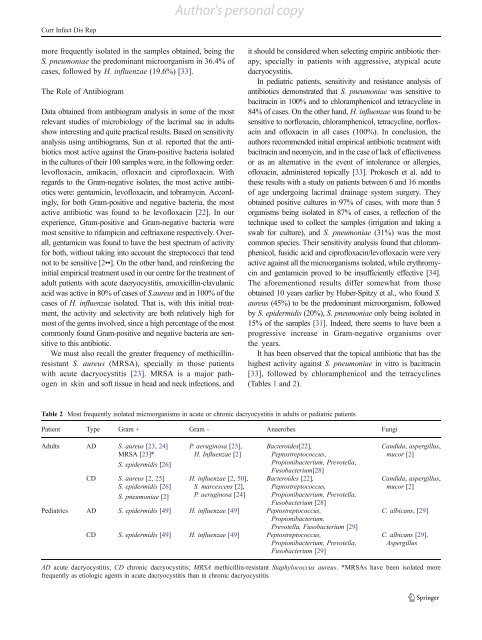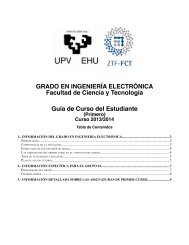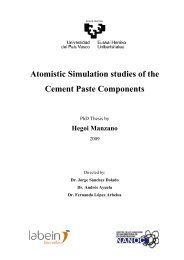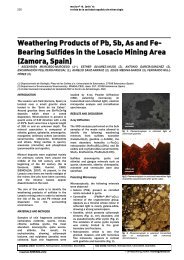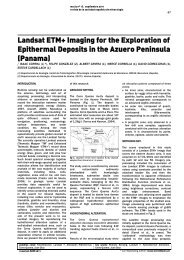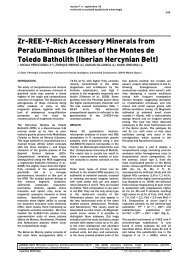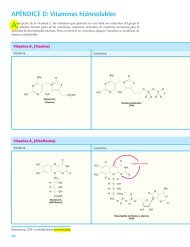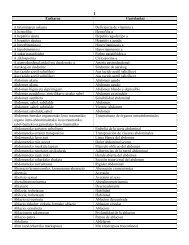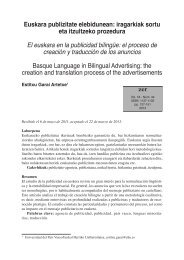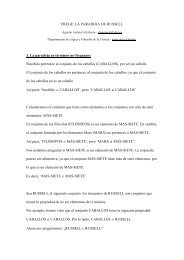Dacryocystitis: Systematic Approach to Diagnosis and Therapy ...
Dacryocystitis: Systematic Approach to Diagnosis and Therapy ...
Dacryocystitis: Systematic Approach to Diagnosis and Therapy ...
You also want an ePaper? Increase the reach of your titles
YUMPU automatically turns print PDFs into web optimized ePapers that Google loves.
Author's personal copy<br />
Curr Infect Dis Rep<br />
more frequently isolated in the samples obtained, being the<br />
S. pneumoniae the predominant microorganism in 36.4% of<br />
cases, followed by H. influenzae (19.6%) [33].<br />
The Role of Antibiogram<br />
Data obtained from antibiogram analysis in some of the most<br />
relevant studies of microbiology of the lacrimal sac in adults<br />
show interesting <strong>and</strong> quite practical results. Based on sensitivity<br />
analysis using antibiograms, Sun et al. reported that the antibiotics<br />
most active against the Gram-positive bacteria isolated<br />
in the cultures of their 100 samples were, in the following order:<br />
levofloxacin, amikacin, ofloxacin <strong>and</strong> ciprofloxacin. With<br />
regards <strong>to</strong> the Gram-negative isolates, the most active antibiotics<br />
were: gentamicin, levofloxacin, <strong>and</strong> <strong>to</strong>bramycin. Accordingly,<br />
for both Gram-positive <strong>and</strong> negative bacteria, the most<br />
active antibiotic was found <strong>to</strong> be levofloxacin [22]. In our<br />
experience, Gram-positive <strong>and</strong> Gram-negative bacteria were<br />
most sensitive <strong>to</strong> rifampicin <strong>and</strong> ceftriaxone respectively. Overall,<br />
gentamicin was found <strong>to</strong> have the best spectrum of activity<br />
for both, without taking in<strong>to</strong> account the strep<strong>to</strong>cocci that tend<br />
not <strong>to</strong> be sensitive [2••]. On the other h<strong>and</strong>, <strong>and</strong> reinforcing the<br />
initial empirical treatment used in our centre for the treatment of<br />
adult patients with acute dacryocystitis, amoxicillin-clavulanic<br />
acid was active in 80% of cases of S.aureus <strong>and</strong>in100%ofthe<br />
cases of H. influenzae isolated. That is, with this initial treatment,<br />
the activity <strong>and</strong> selectivity are both relatively high for<br />
most of the germs involved, since a high percentage of the most<br />
commonly found Gram-positive <strong>and</strong> negative bacteria are sensitive<br />
<strong>to</strong> this antibiotic.<br />
We must also recall the greater frequency of methicillinresistant<br />
S. aureus (MRSA), specially in those patients<br />
with acute dacryocystitis [23]. MRSA is a major pathogen<br />
in skin <strong>and</strong> soft tissue in head <strong>and</strong> neck infections, <strong>and</strong><br />
it should be considered when selecting empiric antibiotic therapy,<br />
specially in patients with aggressive, atypical acute<br />
dacryocystitis.<br />
In pediatric patients, sensitivity <strong>and</strong> resistance analysis of<br />
antibiotics demonstrated that S. pneumoniae was sensitive <strong>to</strong><br />
bacitracin in 100% <strong>and</strong> <strong>to</strong> chloramphenicol <strong>and</strong> tetracycline in<br />
84% of cases. On the other h<strong>and</strong>, H. influenzae was found <strong>to</strong> be<br />
sensitive <strong>to</strong> norfloxacin, chloramphenicol, tetracycline, norfloxacin<br />
<strong>and</strong> ofloxacin in all cases (100%). In conclusion, the<br />
authors recommended initial empirical antibiotic treatment with<br />
bacitracin <strong>and</strong> neomycin, <strong>and</strong> in the case of lack of effectiveness<br />
or as an alternative in the event of in<strong>to</strong>lerance or allergies,<br />
ofloxacin, administered <strong>to</strong>pically [33]. Prokosch et al. add <strong>to</strong><br />
these results with a study on patients between 6 <strong>and</strong> 16 months<br />
of age undergoing lacrimal drainage system surgery. They<br />
obtained positive cultures in 97% of cases, with more than 5<br />
organisms being isolated in 87% of cases, a reflection of the<br />
technique used <strong>to</strong> collect the samples (irrigation <strong>and</strong> taking a<br />
swab for culture), <strong>and</strong> S. pneumoniae (31%) was the most<br />
common species. Their sensitivity analysis found that chloramphenicol,<br />
fusidic acid <strong>and</strong> ciprofloxacin/levofloxacin were very<br />
active against all the microorganisms isolated, while erythromycin<br />
<strong>and</strong> gentamicin proved <strong>to</strong> be insufficiently effective [34].<br />
The aforementioned results differ somewhat from those<br />
obtained 10 years earlier by Huber-Spitzy et al., who found S.<br />
aureus (45%) <strong>to</strong> be the predominant microorganism, followed<br />
by S. epidermidis (20%), S. pneumoniae only being isolated in<br />
15% of the samples [31]. Indeed, there seems <strong>to</strong> have been a<br />
progressive increase in Gram-negative organisms over<br />
the years.<br />
It has been observed that the <strong>to</strong>pical antibiotic that has the<br />
highest activity against S. pneumoniae in vitro is bacitracin<br />
[33], followed by chloramphenicol <strong>and</strong> the tetracyclines<br />
(Tables 1 <strong>and</strong> 2).<br />
Table 2 Most frequently isolated microorganisms in acute or chronic dacryocystitis in adults or pediatric patients<br />
Patient Type Gram + Gram - Anaerobes Fungi<br />
Adults AD S. aureus [23, 24] P. aeruginosa [23],<br />
MRSA [23]*<br />
H. Influenzae [2]<br />
S. epidermidis [26]<br />
CD S. aureus [2, 25] H. influenzae [2, 50],<br />
S. epidermidis [26] S. marcescens [2],<br />
S. pneumoniae [2] P. aeruginosa [24]<br />
Bacteroides[22],<br />
Pep<strong>to</strong>strep<strong>to</strong>coccus,<br />
Propionibacterium, Prevotella,<br />
Fusobacterium[28]<br />
Bacteroides [22],<br />
Pep<strong>to</strong>strep<strong>to</strong>coccus,<br />
Propionibacterium, Prevotella,<br />
Fusobacterium [28]<br />
Pediatrics AD S. epidermidis [49] H. influenzae [49] Pep<strong>to</strong>strep<strong>to</strong>coccus,<br />
Propionibacterium,<br />
Prevotella, Fusobacterium [29]<br />
CD S. epidermidis [49] H. influenzae [49] Pep<strong>to</strong>strep<strong>to</strong>coccus,<br />
Propionibacterium, Prevotella,<br />
Fusobacterium [29]<br />
C<strong>and</strong>ida, aspergillus,<br />
mucor [2]<br />
C<strong>and</strong>ida, aspergillus,<br />
mucor [2]<br />
C. albicans, [29]<br />
C. albicans [29],<br />
Aspergillus<br />
AD acute dacryocystitis; CD chronic dacryocystitis; MRSA methicillin-resistant Staphylococcus aureus. *MRSAs have been isolated more<br />
frequently as etiologic agents in acute dacryocystitis than in chronic dacryocystitis


